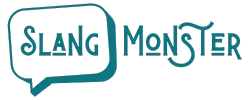
In our everyday communication, we often encounter various forms of language that can either bring us closer together or create barriers. Two such language varieties that frequently come up in both casual and professional settings are slang and jargon.
Understanding the difference between these two and knowing how to use them appropriately can significantly enhance our communication skills. Let’s dive into the world of slang and jargon, exploring their unique characteristics and learning when and how to use them effectively.
What is Slang?
Slang is a type of informal language that serves a strong social function, typically used on social media networks. It’s the colorful, ever-evolving vocabulary that we often use with friends, family, or within specific social groups. Slang terms are typically casual, playful, and sometimes edgy expressions that can quickly become popular and just as swiftly fall out of use.
One of the fascinating aspects of slang is its ability to reflect group identity and create a sense of belonging. As Julie Coleman, author of ‘The Life of Slang’, points out, slang has “more of a social function than being about communication”. It’s a way for people to express their attitudes, show which group they belong to, and indicate who they like or don’t like.
For example, when someone says, “That party was lit!” they’re using slang to express that the party was exciting or enjoyable. The term “lit” in this context is a slang word that has gained popularity in recent years, especially among younger generations.
What Is Jargon?
Jargon, on the other hand, is specialized terminology used within specific professions, industries, or fields of study. Unlike slang, which is often used to create social bonds, jargon serves a more practical purpose: to communicate complex ideas or concepts efficiently among experts in a particular area.
Jargon consists of technical terms and industry-specific vocabulary that might sound like a foreign language to outsiders. For instance, in the medical field, a doctor might say, “The patient presented with acute myocardial infarction.” To a layperson (like myself), this might sound confusing, but to other medical professionals, it clearly communicates that the patient had a heart attack.
Differences between Slang and Jargon
Slang and jargon are both specialized forms of language, but they serve different purposes and are used in distinct contexts. Slang is primarily social, helping build rapport and express group identity in informal settings like casual conversations or social media. It’s often understood by a broader audience, especially within certain age groups or social circles. Slang terms can be short-lived, quickly rising and falling out of popularity.
Jargon, on the other hand, is used for precise communication within professional or specialized contexts. It’s more common in work environments, academic discussions, or technical writing. Jargon is typically limited to experts or individuals within a specific field and tends to be more stable over time. While slang is inherently casual, jargon can be considered formal within its appropriate context.
How to Use Slang
Using slang effectively can help you connect with others and express yourself more vividly. Here are some tips for incorporating slang into your communication:
- Use It Sparingly: Overusing slang can make your communication unclear or seem unprofessional. Sprinkle just enough slang to add color to the writing, but don’t overdo it.
- Know your audience: Use slang only when you’re sure your listeners or readers will understand and appreciate it. It’s particularly effective in casual, friendly settings.
- Be authentic: Don’t force slang into your speech or writing if it doesn’t come naturally. Inauthentic use of slang can make you appear out of touch or trying too hard.
- Consider the context: While slang can be great for social media or text messages, it’s often inappropriate in formal settings or professional communication.
How To Use Jargon
Knowing when to use jargon can be challenging. But if used correctly, they can be a powerful tool for precise communication within specific fields. Let’s explore some scenarios where it enhances clarity in your writing versus leaving readers scratching their heads.
- Know Your Audience: Understanding who you’re writing for is crucial. If your readers are experts in your field, using jargon can be effective. But for a general audience, it’s better to limit jargon and explain technical terms when necessary.
- Enhancing Precision: Jargon’s main purpose is to communicate complex ideas precisely within a specific field. Suppose you are writing for an audience well-versed in the terminology of your field. In that case, integrating jargon can streamline your message, making it more concise and precise.ty to avoid confusing your readers.
- Clarify Concepts: In scientific or technical writing, jargon can help explain complicated ideas more effectively than everyday language. However, it is essential to strike a balance and ensure that your use of jargon does not overshadow the core message or leave your readers feeling alienated.
Should You Use Slang or Jargon formal documents?
To put it simply and, although slang words are used frequently in everyday communication they are inappropriate for writing formal documents. So you should definitely avoid using them in your essay.
As I mentioned before, slang terms are informal and often convey a sense of laziness and and lack of professionalism.
As for jargon, its use in essay or any other formal document will depend on your level of expertise or knowledge in the topic and your target audience.
For instance, if you have a background in accounting you can write an article about Tax preparation and use jargon to make it more interesting and appealing to that particular public.
Conclusion
Slang and jargon are powerful linguistic tools that, when used appropriately, can enhance our communication. Slang helps us build social connections and express ourselves creatively, while jargon allows for precise and efficient communication within specialized fields.
The key to using both effectively lies in understanding your audience, the context of your communication, and the purpose you’re trying to achieve. Whether you’re chatting with friends, writing a business email, or presenting at a conference, being mindful of your language choices can significantly impact how your message is received.
Remember, language is dynamic and ever-evolving. Stay curious, keep learning, and don’t be afraid to adapt your communication style as needed. By mastering the art of using slang and jargon appropriately, you’ll be well-equipped to navigate various social and professional situations with confidence and clarity.


0 Comments